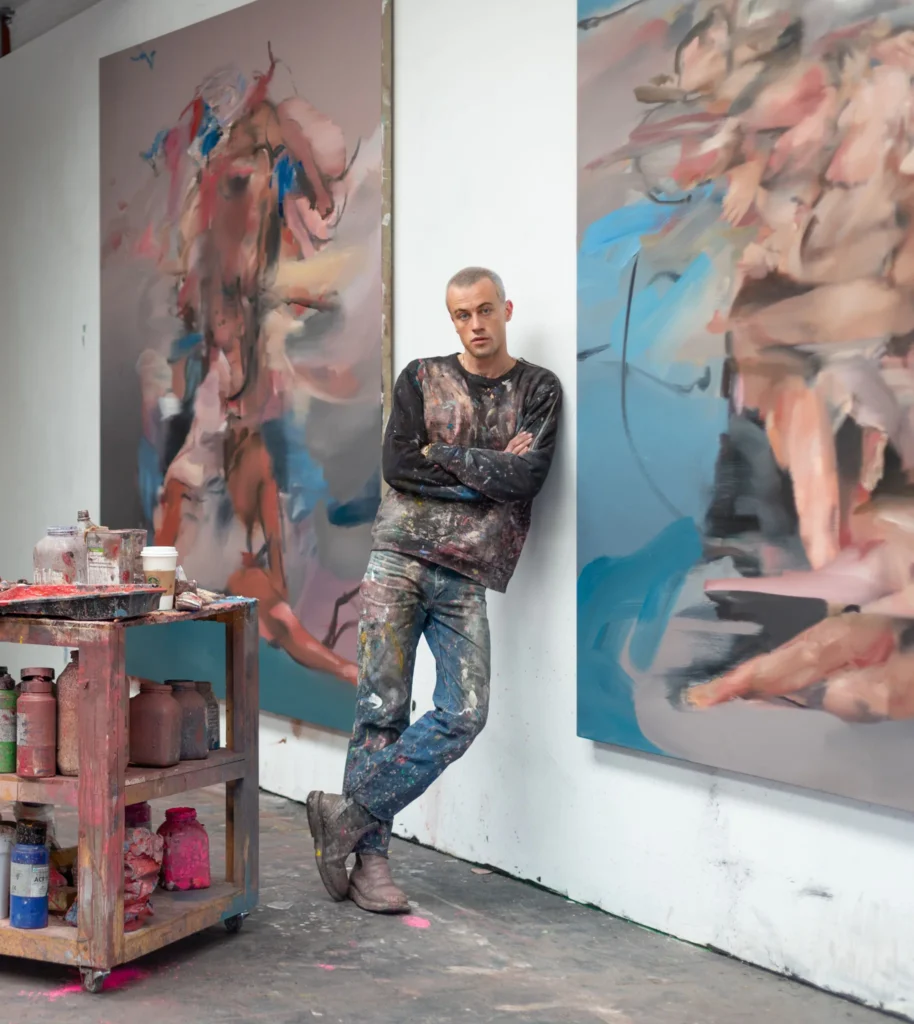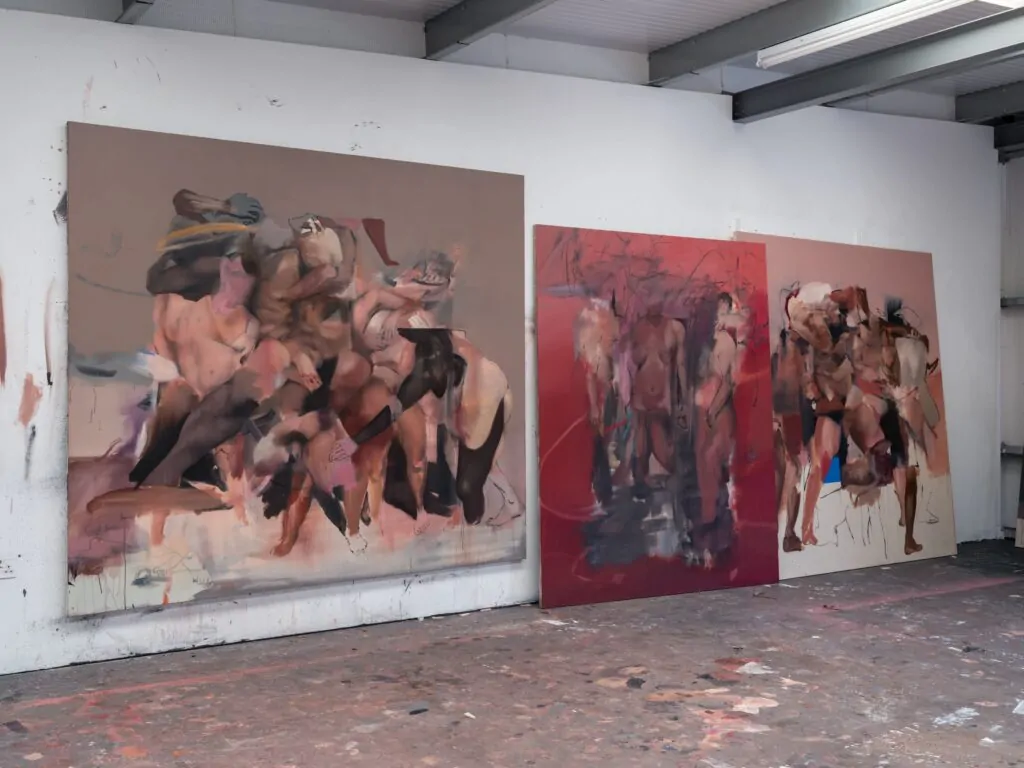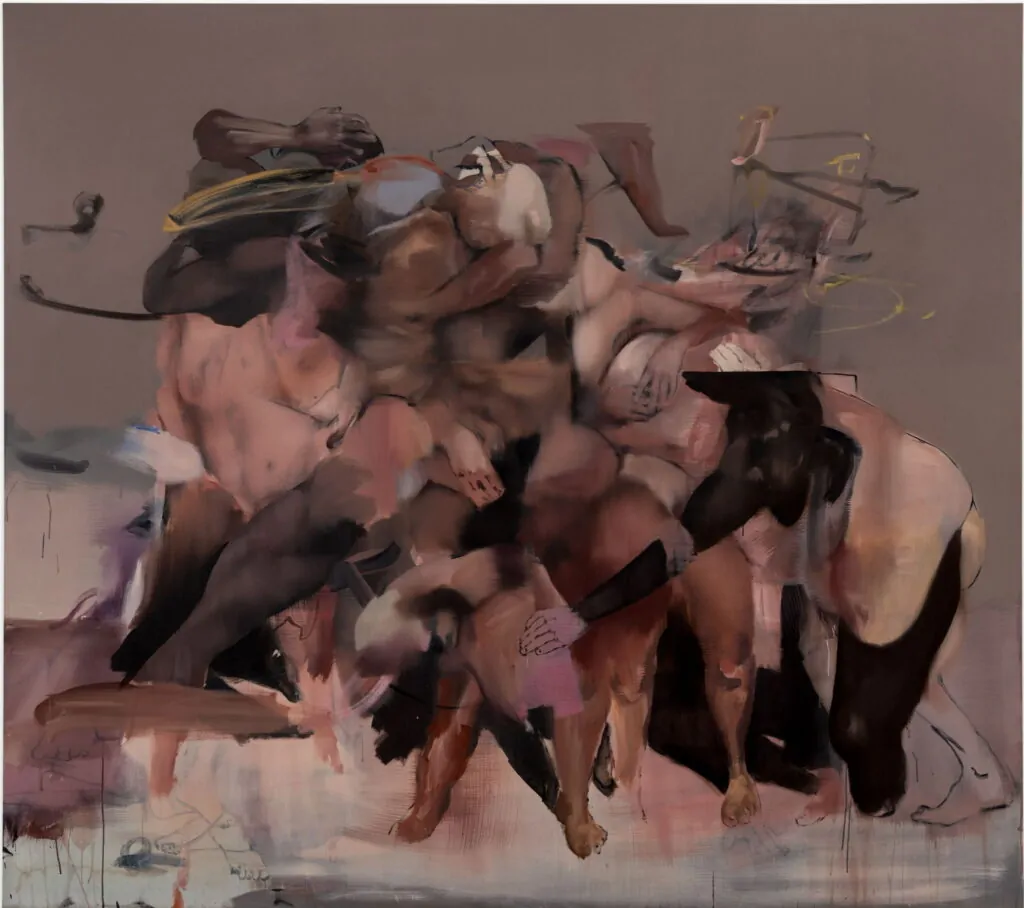George Rouy: The Bleed, Part I
7th October, 2024 – 21st December, 2024
Hauser & Wirth London
23 Savile Row
London W1S 2ET
Emerging as a leading figure of the new generation of painters, George Rouy’s debut solo exhibition at Hauser & Wirth London, ‘The Bleed, Part I,’ will present a new body of work continuing his inquiry into collective mass, multiplicity and movement. The second chapter, ‘The Bleed, Part II,’ will follow at Hauser & Wirth Downtown Los Angeles in February 2025. Rouy’s dynamic and signature use of the human figure, vexed with desire, alienation and crisis, speaks to the emotional extremities of our time, resulting in explorations of identity and embodiment in a globalised, technologically-driven 21st Century.

‘The bleed’ is an expression used by Rouy to pertain to the relationship between figure and void—or ‘the surrounds’, as termed by the artist—and how those two realms interact and manifest on the surface of his paintings, resulting in a physical seeping, blending and merging. ‘The surrounds’ refers to the zone where flesh and inner parts of the body meet their surrounding conditions—from intensive properties of temperature, density and speed to extensive forms of mass, volume and entropy. The paintings on view not only reflect the tension present between figures and their surrounds but also the tensions and harmonies among individuals or a group.
Amongst these themes is the idea of ‘carrying’, exploring how we are carried into—and eventually out of—life, alongside feelings of being carried, or the opposite, being dropped. Applied to the mass of figures within his paintings, Rouy considers collective care and how we care for each other from birth until death, how our lives are a sequence of experiences of balance and unease.
In these new works, abstraction is used as a tool of pursuing a sensation of distortion. The gestural sections are used not as abstract marks per se but as a series of signals to breakages in the figures, and to control the pace of looking at the picture. The works offer an uncanny familiarity, with each composition invoking forms and feelings born as much from the artist’s mind as they are a phantasmagoria, lost of reference and time.

Indeed, the works integrate many different photographic, lens and screen-based references. Rouy has always sought for his paintings to reference the human form ‘from life’ through a ‘distorted reality’ which he is able to find at source on screen or in photography. That said, he equally sees painting as an extraction of reality, with an uneasy connection or relation back to it.
For ‘The Bleed, Part I,’ Rouy experiments with a purely monochrome palette for the first time, resulting in works that he calls ‘phantom paintings.’ The combination of silver pigment and black charcoal creates new opportunities to explore the extremes of light and darkness, shadow and illumination, making visible previously hidden aspects of form.

© George Rouy. Courtesy the artist, Hannah Barry Gallery and Hauser & Wirth. Photo: Damian Griffiths
Rouy’s figures become increasingly abstracted, their faces often blurred or completely removed. As the face is increasingly eliminated as a signifier or signpost in his paintings the hands take on a new role, connecting different parts of the painting together, as well as guiding the viewer around the painting surface, composition, and ideas.
This blurring allows Rouy to create space within the work; by avoiding any distinct markers of gender or identity, the work taps into a common consciousness and transcends a locked experience. In illustrating a mass or collective of figures in extreme or altered psychological stages, Rouy references classical tragedy paintings—such as ‘The Raft of Medusa’ (1818) by Theodore Gericault, in which the survivors of a shipwreck are depicted—in his desire to reflect how the body itself provokes emotion. Rouy’s barely distinguishable figures suspended weightlessly on the canvas are inspired by the feeling of Gericault’s figures floating adrift out at sea.

Articulating a vocabulary of figurative painting which is as distinctive as it is visceral, Rouy’s paintings are defined by contradictions: stasis and flow, precision and indeterminacy. In doing so, he undermines the body as a fixed unit, proposing instead a body that constantly imagines and defines itself through its relationship with itself, with others and with the world at large.
Learning
Accompanying the exhibition our Learning Programme will involve the artist himself and engage learners with George Rouy’s work. This includes an ‘Educators Evening’ on 7 November.
George Rouy: The Bleed, Part I opens on the 7th of October, 2024 until the 21st of December, 2024 at Hauser & Wirth London
©2024 Hauser & Wirth





